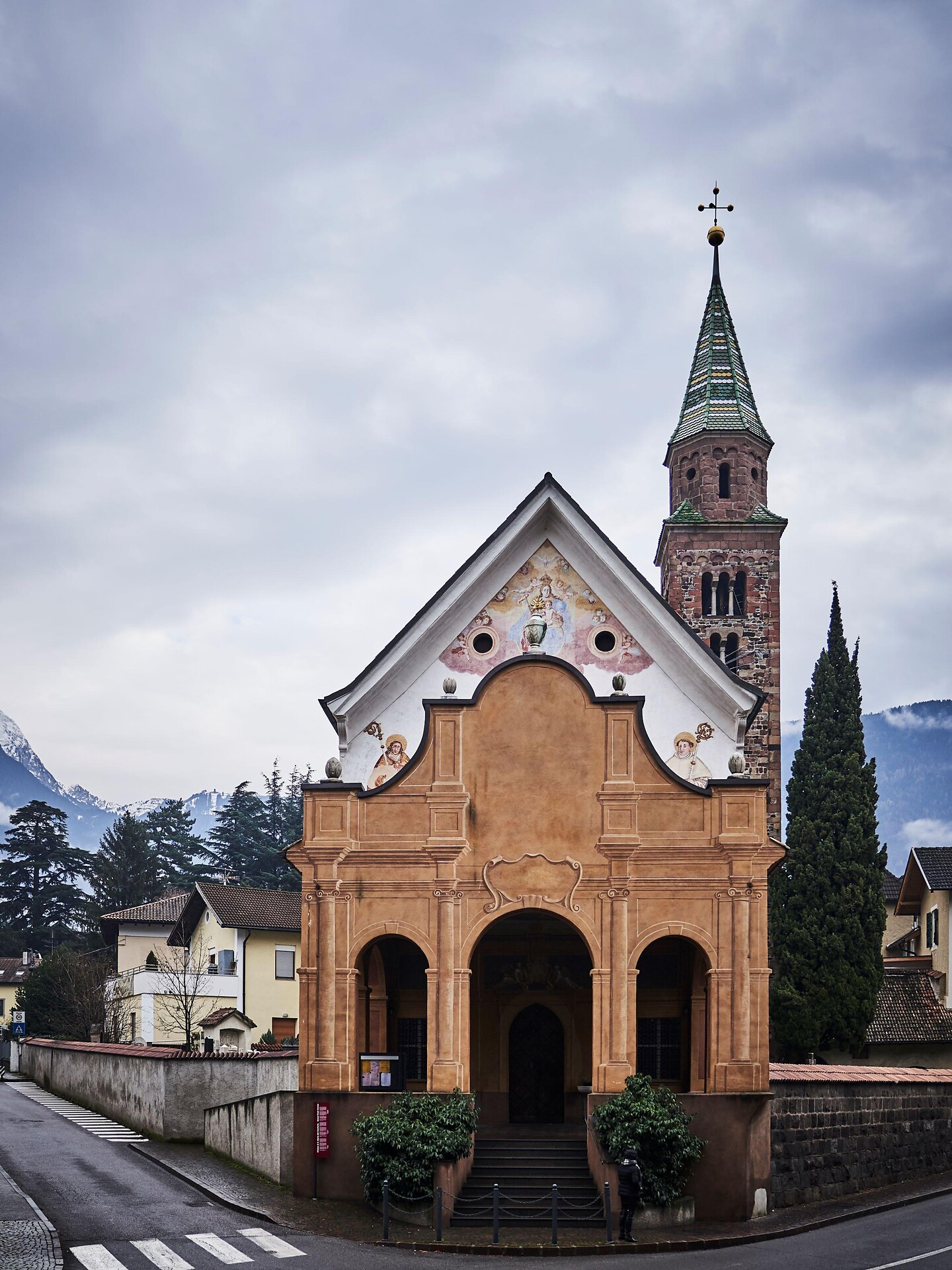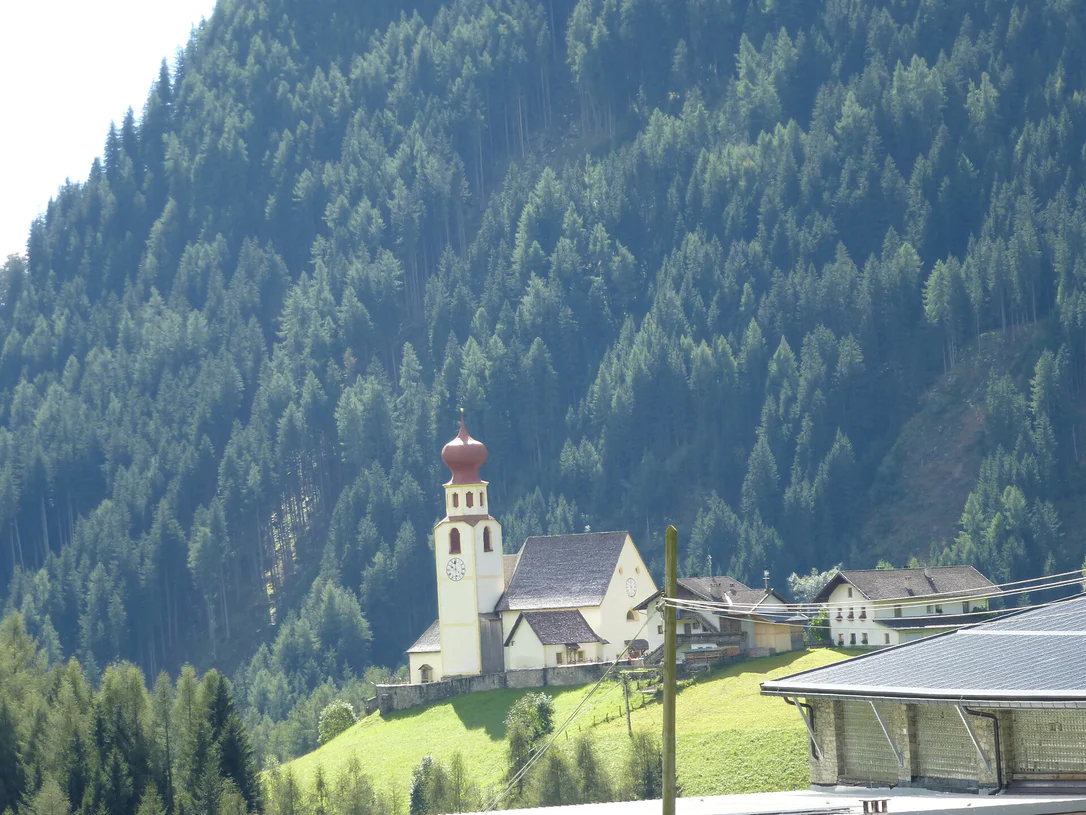The parish church of Nova Ponente, a Gothic building dating from the 15th century, has an impressively beautiful sandstone cladding. The inscription in the choir vault gives its date of origin: the cornerstone was laid on 5 July 1455 by Pastor Johannes Steel. Below the inscription is the coat of arms of the Diocese of Trento with the eagle, along with that of the then Bishop Georg Hack with its thin branch, also chosen as the heraldic symbol of the municipality of Nova Ponente.
The building was completed in sections, as suggested by the differences in the foundations and the sandstone cladding. Construction work was not completed until 1498, with the church consecrated on 16 September of the same year. In order to imagine it in its pure and original form, the new sacristy at the northeast corner and the organ loft with its outside staircase must be ignored. The interior of the church was vastly improved by the most recent renovation in the summer of 1975. The two neo-Gothic altars date from 1900, with a new organ installed in 1976.
Of particular note in the church are the four old relief panels on the high altar, showing the Nativity, the Adoration of the Magi, the Presentation at the Temple and the Death of the Virgin. The panels are from a famous large triptych, created around 1420 by the Master Hans von Judenburg for Bolzano’s Parish Church, as was the group of the Visitation on the wall of the choir. The main figures on the high altar – Our Lady of the Rosary and the church’s two patron saints - are beautiful works by the Innsbruck sculptor Dominikus Trenkwalder from around 1900. The relief figures of St. Barbara and St. Catherine as well as the relief panel of the Visitation, also on the choir walls, date back to around 1500. The sandstone pulpit from the early 16th century is held by Karl Atz in his “History of Art from Tyrol and Vorarlberg” to be one of the most beautiful of its kind in the entire land.
Old relief medallions of the mysteries of the rosary are inserted into the neo-Gothic rosary altar; the altarpiece was created by Franz Unterberger. Franz Haider’s beautiful nativity figures can be seen at Christmastime on this altar: his figurines and statues of saints are to be found throughout the Reggelberg area and he was a long-time resident of Monte San Pietro. The bell tower is for the most part much older than the present-day church. It dates back to the Romanesque era; inside can clearly be seen two rows of coupled arched windows that were later walled up. The tower formerly belonged to the old parish church of St. Benedict, documented as early as 1265. Today’s cupola was added in 1793 after lightning badly damaged both the tower and the church roof.
Another special feature of the church is that the pews have brass plaques, some with a rune-like mark next to the occupant’s name. These are the old house and farm marks of Nova Ponente. Each farm would use its mark to identify tools, grain sacks, logs and the like that were offered for sale. Many such marks can also be seen painted with red ochre on the outer walls of the church, now faded on account of the wind and rain. The impressive war memorial (1967) on the northern wall of the cemetery is by the South Tyrolean sculptor Martin Rainer, who was in 1976 awarded the Walther von der Vogelweide prize.

























































